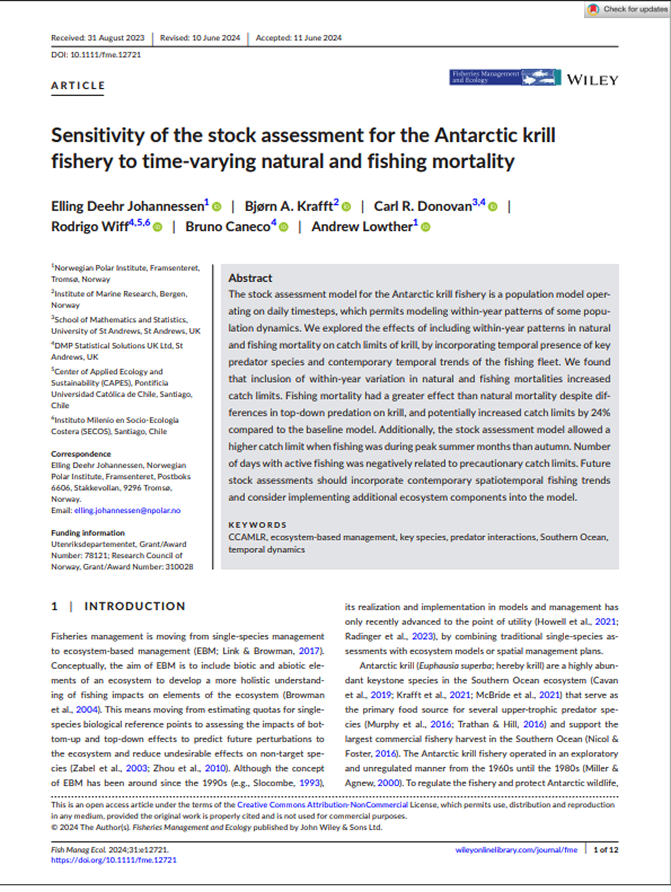
Biomass
Antarctic ecosystem
Fisheries management
Climate
Krill (Euphausia superba)
No evidence for a decline in the density of Antarctic krill Euphausia superba Dana, 1850, in the Southwest Atlantic sector between 1976 and 2016
Summary
This study challenges previous reports of major Antarctic krill population declines. By reanalyzing the KRILLBASE database with improved methods, researchers found no evidence for significant long-term decline in krill numbers in the Southwest Atlantic.The findings contradict earlier research suggesting 38-81% declines per decade. Instead, krill populations appear stable over four decades with considerable year-to-year variation. The researchers argue that previously reported declines resulted from uneven sampling and failure to account for different types of nets used to collect data.The authors note that massive population declines would have caused obvious effects on animals that depend on krill for food, which haven't been observed. These findings suggest that current thinking about climate-driven changes in Antarctic ecosystems needs revision, with important implications for managing krill fisheries.

1
This map shows how krill populations have changed over time in different areas of the Southwest Atlantic Ocean. Each purple dot represents krill density measured at a specific place and time. The straight lines show the general trend in each area - green areas (+) show increasing krill populations, while red areas (–) show decreasing populations. The number in each area shows how many samples were taken there. The grey shading around the lines shows the uncertainty in the measurements.Key Findings
1
No evidence that krill populations have significantly declined in the Southwest Atlantic 2
Krill numbers appear stable over time but vary considerably from year to year 3
Previous reports of major declines likely resulted from not properly accounting for different sampling methods 4
The lack of widespread effects on krill predators supports the finding that krill populations are stable

